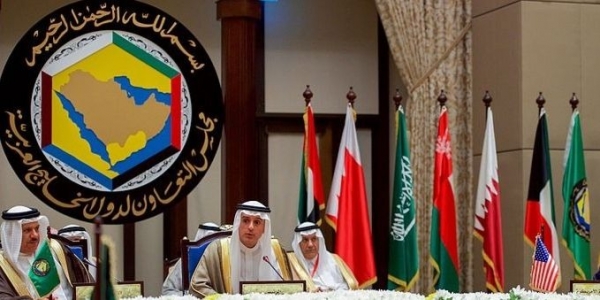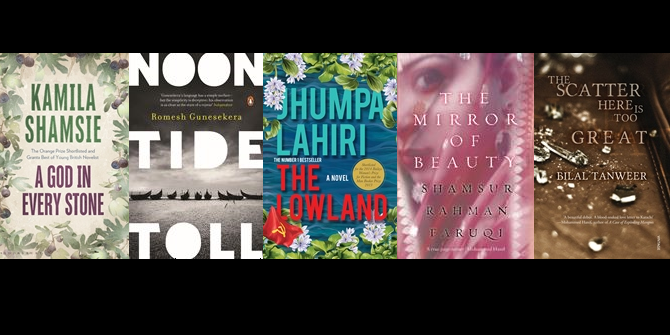 What should be India’s response to deal with the situation in the Arab Gulf? While taking stock of India’s interests in each of these countries, Shelly Johny uses the example of two other Arab Gulf countries, Kuwait and Oman, to understand how India can navigate the complex geo-political maze in the region.
What should be India’s response to deal with the situation in the Arab Gulf? While taking stock of India’s interests in each of these countries, Shelly Johny uses the example of two other Arab Gulf countries, Kuwait and Oman, to understand how India can navigate the complex geo-political maze in the region.
Since the outbreak of political protests in various Arab states at the end of 2010, West Asia has gone through a tumultuous phase which has altered the political and strategic landscape of the region. Experts have been trying to understand how these changes have affected India’s interests in the region especially in the Arab Gulf states of Saudi Arabia, Oman, the United Arab Emirates, Qatar, Bahrain and Kuwait. India’s primary interests in this region have been securing India’s energy imports from these countries, ensuring the safety and security of Indian expatriates in these countries and increasing trade. But a deeper analysis reveals that the stability of the Arab Gulf states is important for India’s larger interests in the region as the collapse of these states can drastically impact the Arab state system in West Asia with its repercussions spreading to South Asia as well. While political protests and tensions were prevalent in Bahrain along with some protests in Saudi Arabia and Oman, overall the Arab Gulf monarchies and other similar entities such as Morocco and Jordan have fared much better than the autocratic and military dictatorships in North Africa and West Asia. Therefore the stability and prosperity of these states is a kind of bulwark against wider region collapse.
But a more serious issue is now the increased rivalry and tensions among the Arab Gulf states themselves. Saudi Arabia, Egypt, UAE and Bahrain have imposed an embargo against Qatar since June 2017. The rivalries between Qatar and its Gulf neighbours have been going on for some time, especially after the outbreak of protests in the Arab world since the end of 2010. Saudi Arabia and Qatar’s support for opposing sides in political crises in Egypt and Syria, the Qatari news network Al Jazeera’s criticism of other Arab governments including Saudi Arabia and Qatar’s close relations with Iran have all lead to the present impasse in the Gulf. This has complicated matters for India. Earlier India successfully balanced relations between rivals like Iran, Saudi Arabia and Israel and it was understood in West Asia that relations with one would not necessarily impede or impair relations with the others. But with Saudi Arabia under Crown Prince Muhammad bin Salman taking a hard line stand against Iran, such balancing might become difficult. This complicates India’s political and economic interests in the region as India imports crude oil from Saudi Arabia and Iran, and natural gas from Qatar. Dealing with a united Guld Cooperation Council (GCC) was easier for India as most of its members used to have broadly common foreign policies.

Related to the changing scenario in West Asia is the growing propensity of Arab Gulf nations like Saudi Arabia, UAE and Qatar to intervene in conflicts in the Arab world. While it began with air strikes in Libya by UAE and Qatar, it has taken a grave turn in Saudi Arabia’s leadership of a military coalition against Shia Houthi rebels since 2015. Air strikes have often worsened ongoing conflicts leading to humanitarian crises in the targeted countries like Libya and Yemen. The Saudi and Emirati interventions in Yemen have also included ground contingents comprising mercenaries from security contractor companies and troops loaned from other countries. One of the factors that deter nations from fighting wars is the resultant human cost that has to be borne by their respective societies. This factor is not going to deter the Saudis and the Emiratis despite some casualties from their armies as most of the fighting is contracted to mercenaries, a model which was initially utilized for the security of the Abu Dhabi royal family. An aspect that is not much debated is the likely spillover of the conflict to the territories of Saudi Arabia and UAE, both neutral countries which ensured economic prosperity and stability.
An ominous development is the covert alliance between Saudi Crown Prince Muhammad bin Salman, US President Donald Trump and Israel against Iran. The recent moves including Saudi dabbling in Lebanese politics is an attempt to begin a new front against Iran in the Levant. But any conflict between Saudi Arabia and Iran can easily envelop the Persian/Arabian Gulf region from where India imports most of its energy requirements. Saudi Arabia’s aggressive foreign policy should also be seen in the light of domestic developments in Saudi Arabia. There have been attacks from Yemen in Saudi territory adjacent to the border and also attempted Houthi missile strikes against Riyadh. Both Al Qaeda and the Islamic State have conducted terrorist strikes in the country with the latter specifically targeting Shia mosques trying to instigate Sunni-Shia strife. The Saudi regime executed the Shia cleric Sheikh Nimr al-Nimr in 2016 and leveled the Shia town of Awamiya in eastern Saudi Arabia in 2017. Recently, the government arrested dissidents from the royal family and kept them in confinement in the name of battling corruption. The multiple crises affecting Saudi Arabia is a cause of concern for India as it is the second largest destination for Indians in the Arab Gulf including Malayalis from the southern Indian state of Kerala.
The question is what India’s response to deal with the situation in the Arab Gulf should be. Here the roles of two other Arab Gulf countries, Kuwait and Oman should be scrutinised. Kuwait is playing a mediatory role between Qatar and its Gulf neighbours. Oman has been playing a peacemaking role in the wider region for the past several decades and was responsible for arranging negotiations between the Americans and the Iranians that led to the Iran Nuclear Deal. Oman’s style of mediation is different from the mediatory role that Qatar envisaged for itself from the 2000s onwards. Qatar’s ambitious objective was to carve out a larger role for itself in the region using its wealth and mediation was the means to achieve this end. But Oman sees a stable and secure West Asia as one which would ensure its autonomy and has accordingly maintained good relations with all players including Iran, US and even Israel at a more low profile level. Oman has historically tried to maintain its independence within the GCC, showing its independent stand at various junctures and resisting Saudi domination. In this context, interventions of the Saudis and other powers in Yemen are viewed with trepidation by Oman as it is the only Arab Gulf country that shares its borders with Yemen besides Saudi Arabia with chances of a spillover to Omani territory.
Ideologically, there are other reasons why India should support the attempts of both Kuwait and Oman. Kuwait is the most democratic country among the Arab Gulf states with a functioning parliament which is a consequence of Kuwait’s political history. Oman has been more of an Indian Ocean power rather than solely an entity of the Arabian Peninsula. It has thus accepted socio-cultural influences from other regions on the Indian Ocean rim like Iran, East Africa, the Makran coast of Pakistan and India. A recent statement by a senior Omani official has hinted that if the GCC were to split under adverse circumstances, Oman would look to ally with other powers outside the region including India. Indian Prime Minister Narendra Modi has focused on building relations with Saudi Arabia and UAE because of obvious factors like energy, trade and Indian expatriates but supporting the efforts of Kuwait and Oman could help secure India’s long term interests in the region.
Note: This article gives the views of the authors, and not the position of the South Asia @ LSE blog, nor of the London School of Economics. Please read our comments policy before posting.
About The Author

Shelly Johny completed his Masters in International Relations from Middlesex University, London. He then did Ph.D. on West Asian Studies (Middle Eastern Studies) from Jawaharlal Nehru University, New Delhi, India. He is presently Assistant Professor of Political Science at St. Aloysius College, Thrissur, Kerala, India. His main research areas are the politics and international relations of the Middle East, Pakistan and Afghanistan; Early Christianity and Judaism (Second Temple – post-Second Temple) in the Early Historical Indian Ocean.







